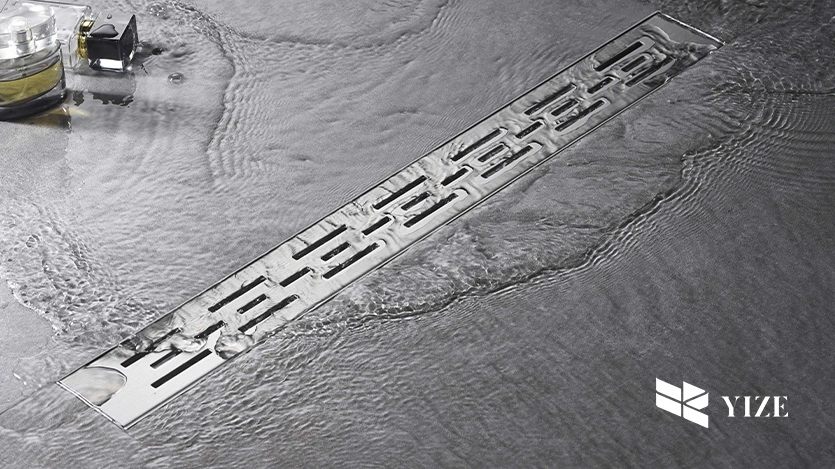
I. Introduction
Renovating your shower drain not only makes it more functional but also improves the hygiene and efficiency of your bathroom. There are a number of things to take into account when planning on getting a shower drain renovated, from picking the right form of drain to making certain it’s easy to maintain. Now, let’s go through a few key tips that will help you make the best decisions for a painless shower drain renovation.
II. Identify Common Shower Drain Problems
Before getting underway, you need to know the most common problems with shower drains. This will help you decide what drain to use and how to install it to ensure a great, lasting renovation.
- Slow Drainage: It is usually a result of soap scum, hair buildup, or an incorrect drain slope, which will not allow water to flow.
- Recurring Clogs: Standing water can also support bacteria and mold, and it can become a frequent clog issue. You can reduce this problem through regular cleaning and by choosing the proper type of drain.
- Unpleasant Odors: Trapped debris, mold, or mildew typically cause unpleasant odors in the drain. A well-sealed, easy-to-clean drain should help minimize this problem.
- Leaks Around the Drain: The sealing can also wear out over time or be poorly installed, causing leaks. However, solutions like elastic sealing or waterproof material can be good preventatives.
Before you even consider starting renovation, you’ll find these problems and handle them well to improve shower function and reduce future maintenance.
III. 7 Tips for Shower Drain Renovation in Your Bathroom
1. Assess Your Current Shower Drain Situation
Start by checking out the way your shower drain is currently set up. Issues such as clogging, slow drainage, or leaks can tell you if you need a minor fix or a full drain replacement. Remember that the type of drain, in particular, will be influenced by the bathroom’s compatibility with other bathroom elements.
2. Choose the Right Type of Shower Drain

In addition to linear, point, or tile-in drains there is also a choice of an actual diversity of shower drains. Each type has its benefits:
- Linear Drains: They are really long and straight, good for showers with large tile patterns, and will give your shower a sleek modern look.
- Point Drains: These drains are most common in traditional showers and great for smaller tiles.
- Tile-in Drains: These go with the floor for a minimalist design.
Choose a drain type that complements your design ambitions and the true purpose of your bathroom.
3. Understand Drain Placement and Spacing
Proper placement and spacing will enable good drainage. If you’re installing a new drain, make sure the shower’s slope and water flow are going in the direction you want. Linear drains work well if you line the wall with them, but point drains are more suitable at the center. Spacing and slope should ensure that water drains into the drain without puddles or the risk of leaks.
4. Install According to Building Codes and Regulations
Some security also relies on adhering to local building codes. Regulations generally require a minimum drain size, slope, and materials. You can check these codes so that you don’t have any potential trouble with water damage or leaks that could end up costing you more than you think.
5. Use Elastic Sealing for Leak Prevention
Elastic sealing prevents leaks by creating a flexible barrier around your drain. It is also flexible enough to adjust for small shifts caused by temperature changes. Particularly important at shower edges where tiles meet, this sealant prevents moisture from entering walls and floors.
6. Opt for Easy Maintenance and Cleaning
An easy-to-clean drain design will save you time and extend the life cycle of your shower setup. If the drain has removable grates or filters and you can easily clean the inside, or there is a filter that will prevent clogs, that’s fine. By sticking to regular maintenance, you’ll be able to keep your drain in great working condition and avoid common problems such as slow drainage.
7. Don’t Forget About Eco-Friendly Options
Drain options designed to save water and use fewer chemicals are eco-friendly. If you can, choose drains made of sustainable materials or using water-saving mechanisms. In fact, there are some models that incorporate filtration systems to prevent as much hair and debris to your plumbing.
IV. Why Choose YZDRAIN?

When it comes to reliable shower drain systems, YZDRAIN stands out for several reasons:
- High-Quality Standards and Process Technology: YZDRAIN products all with advanced technology, to manufacture top quality products.
- Excellent Durability Solutions: These drains are built to last and can handle the demands with years of performance without breaks.
- Customer Feedback: Customers who prefer YZDRAIN’s durable, easy-to-maintain indoor systems have been giving it a thumbs up.
V. Conclusion
The effort of renovating a shower drain is a generally beneficial expenditure with regard to your toilet’s clean and efficient function, by checking your current setup, choosing the right drain type and following building codes you build a basic foundation for good drainage. Eco friendly as well as the addition of elements such as elastic sealing, really enhance the durability and the environmental impact of the drain.
You can rely on a reliable brand like YZDRAIN, which has high quality and longevity and has excellent customer reviews. Revamps with a few key considerations in place will resolve immediate problems while also ensuring that your bathroom remains a problem-free zone for many years to come.
Frequently Asked Questions (FAQs)
1. How often should I clean my shower drain?
If you have a shower drain with a trap or other kind of cover that will trap debris, it’s best to clean that area of your shower drain at least once a month.
2. Can I install a linear drain in any shower?
Sure enough, but ensure your shower floor has a slope that funnels water down to the linear drain. It’s a good idea to get professional assistance with the right installation.
3. Why is elastic sealing necessary for shower drains?
Elastic sealing helps to prevent leaks whilst being flexible to expansion and contraction due to temperature, protecting your bathroom from water damage.
